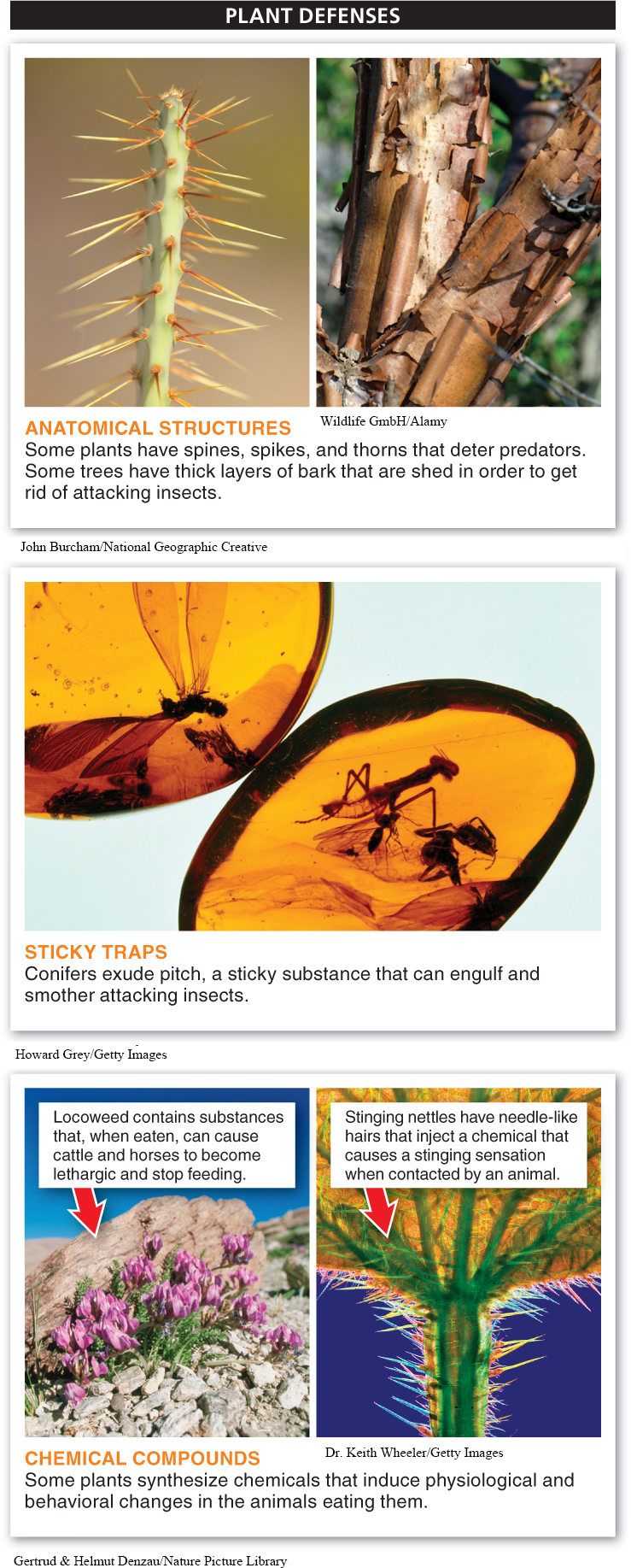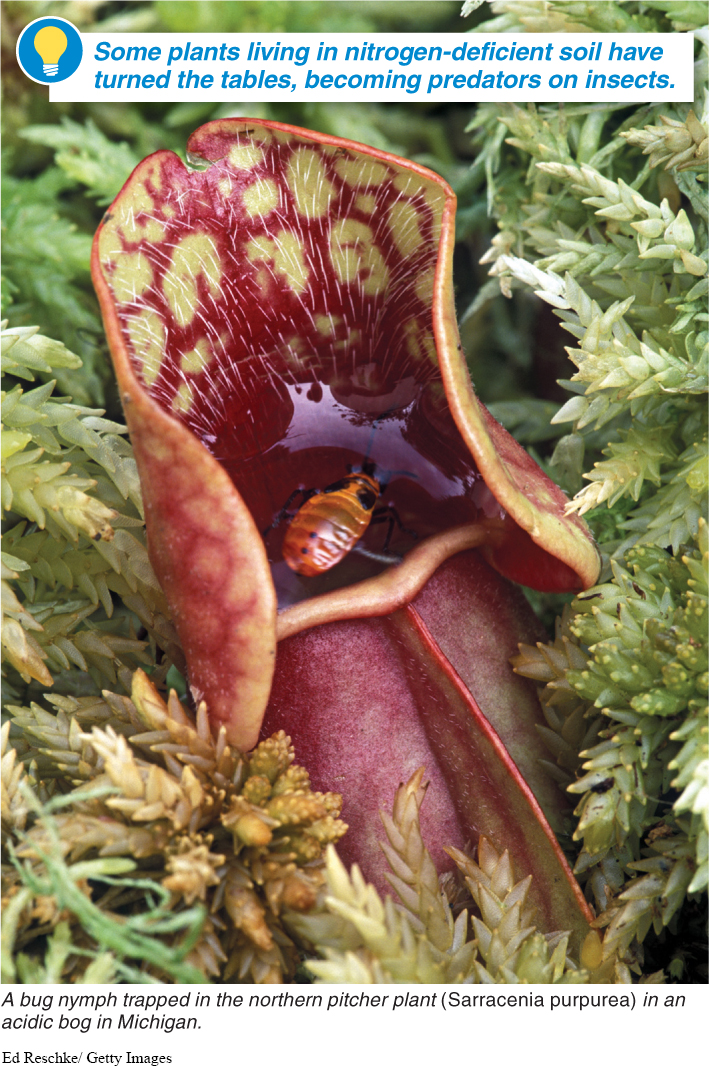The interactions of plants and animals are not simple. On the one hand, plants depend on animals to pollinate their flowers and disperse their seeds. On the other hand, many kinds of animals eat plants, and plants are vulnerable because they can’t run away.
Just because plants can’t run away from plant-

Spines, prickles, and thorns are a common way to discourage herbivores, and some of these structures are impressively large. The acacias, a group of plants that grow as large bushes or small trees, are notoriously spiny. In these plants, the deterrent effects of spines are sometimes enhanced by the presence of ants that live in the swollen bases of the spines and fight off other animals—
516
Many chemical defenses make plants bitter or otherwise unpalatable, but some plants play hardball by producing chemicals that affect the nervous or reproductive systems of their predators. Locoweeds, which occur all over western North America, contain alkaloids that can cause permanent damage to the nervous system. When cattle and horses eat locoweed, they tire quickly and stop eating. Other defensive chemicals are hallucinogens. Tetrahydrocannabinol, or THC, in the leaves and buds of marijuana plants disorients mammals and causes them to stop eating.
Many of the chemicals that plants produce to protect themselves have physiological effects in humans, and for thousands of years humans have used plants for medicinal purposes. The aboriginal peoples of North America and Eurasia, for example, knew that extracts of willow or aspen bark could relieve pain. Salicin is the compound in the bark that relieves pain, and we still use acetylsalicylic acid (aspirin) for pain relief. Opium poppies produce a more powerful pain reliever; foxglove flowers contain a compound that slows the heart rate; and a compound from the ipecacuanha plant can induce vomiting.
Plants with medicinal uses are sought after (a process called “bioprospecting”), and representatives of pharmaceutical companies trudge through rain forests and deserts to find them. The rewards from such a discovery can be great. For example, artemisin from Chinese sweet wormwood is effective in treating malarial infections that are resistant to conventional pharmaceutical compounds.
There’s another role that chemicals can play in a plant’s defense systems. Although plants can’t move, they do send messages. They release volatile chemicals when they are attacked by insects, and these airborne chemicals can warn nearby plants of the impending threat or can call protective insects to their aid. When plants are nibbled by insects, they release the chemical methyl jasmonate (MJ), which is carried with the breeze to nearby plants. When these plants detect the presence of MJ, they ramp up production of their own defensive chemicals so that they are prepared if the insects move in to feast on them. Insects can also detect MJ, and insects that prey on other insects are attracted to plants emitting the chemical, because it signals the presence of prey. When corn and cotton plants are attacked by caterpillars, release of MJ summons parasitic wasps that deposit their eggs inside the caterpillars. When the eggs hatch, the wasp larvae eat the caterpillars from the inside out.
517
About 900 species of plants turn the tables—

TAKE-HOME MESSAGE MESSAGE 12.12
Plants have a wide range of defenses against herbivorous animals, from physical defenses such as thorns to chemicals that have complex effects on animals’ physiology. Plants respond to insect attack by synthesizing chemicals that make the plant less palatable. Some plants living in soil that is deficient in nitrogen have switched roles, preying on insects.
What is methyl jasmonate (MJ), and how do plants use it as a defense against insects?
MJ is a volatile chemical that is released when a plant gets nibbled on by an insect. This airborne chemical “message” can warn nearby plants of the threat. In turn, the neighboring plants increase their production of defensive chemicals for protection. Additionally, insects that prey upon other insects can detect MJ and are attracted to plants emitting the chemical.
518